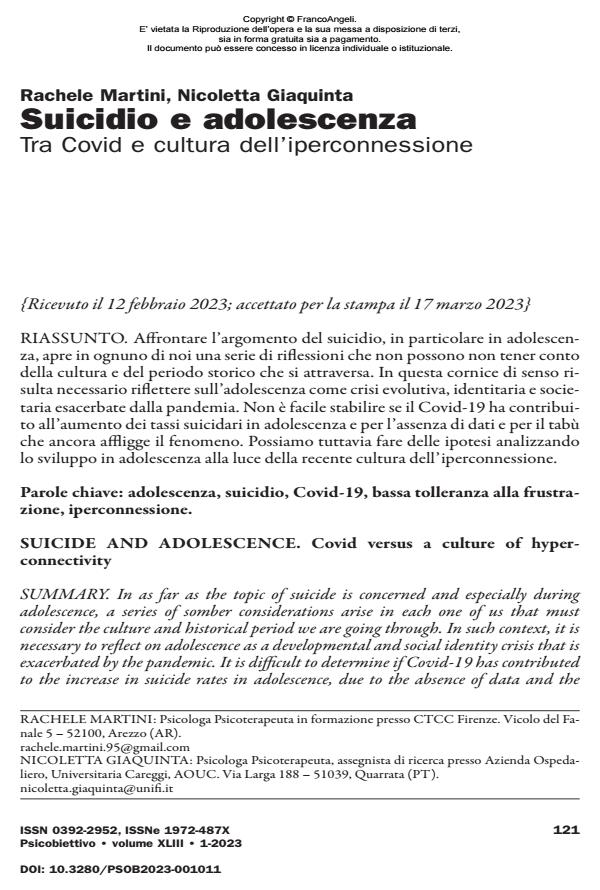Suicide and adolescence. Covid versus a culture of hyper-connectivity
Journal title PSICOBIETTIVO
Author/s Rachele Martini, Nicoletta Giaquinta
Publishing Year 2023 Issue 2023/1
Language Italian Pages 14 P. 121-134 File size 640 KB
DOI 10.3280/PSOB2023-001011
DOI is like a bar code for intellectual property: to have more infomation
click here
Below, you can see the article first page
If you want to buy this article in PDF format, you can do it, following the instructions to buy download credits

FrancoAngeli is member of Publishers International Linking Association, Inc (PILA), a not-for-profit association which run the CrossRef service enabling links to and from online scholarly content.
In as far as the topic of suicide is concerned and especially during adolescence, a series of somber considerations arise in each one of us that must consider the culture and historical period we are going through. In such context, it is necessary to reflect on adolescence as a developmental and social identity crisis that is exacerbated by the pandemic. It is difficult to determine if Covid-19 has contributed to the increase in suicide rates in adolescence, due to the absence of data and the taboo that still plagues the phenomenon. We can, however, speculate by analyzing adolescence development regarding the recent culture of hyper-connectivity.
Keywords: adolescence, suicide, Covid-19, low frustration tolerance, hyper- connectivity.
Rachele Martini, Nicoletta Giaquinta, Suicidio e adolescenza. Tra Covid e cultura dell’iperconnessione in "PSICOBIETTIVO" 1/2023, pp 121-134, DOI: 10.3280/PSOB2023-001011